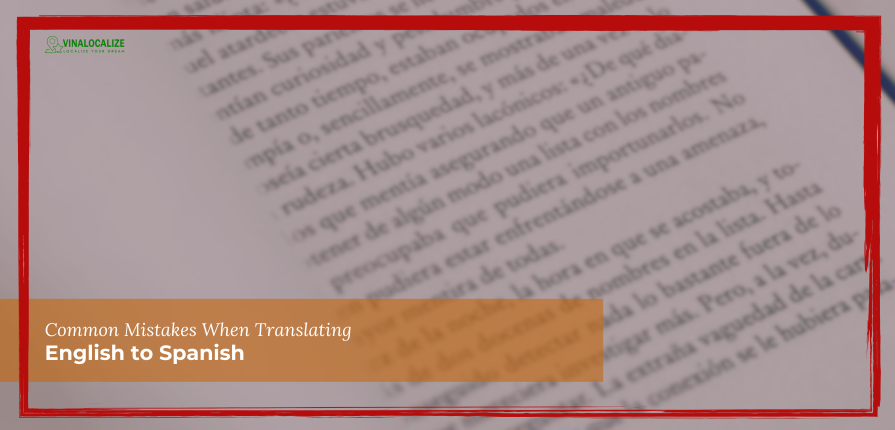When it comes to translating English to Spanish, a language pair with a vast cultural and lexical divergence, the potential for missteps is considerable.
In this article, we explore some common mistakes made during the intricate process of translating English to Spanish and shed light on ways to avoid them.
Translating English to Spanish: The Common Mistakes
Overlooking Cultural Context
One of the cardinal sins in translation is neglecting the importance of cultural context. Languages are not mere codes; they encapsulate the essence of a culture. Translators often falter when they fail to grasp the cultural connotations of certain words or phrases, leading to a loss of meaning. For instance, translating idioms literally without considering their cultural relevance can result in confusion or even unintended humor.
Neglecting Regional Variations
Spanish is spoken across a multitude of countries, each with its own linguistic nuances and regional variations. Failing to account for these differences can lead to awkward or even offensive translations. Choosing the wrong regional term or expression might create a linguistic dissonance that distances the target audience. Hence, a translator must be attuned to these subtleties and select language variants that resonate with the intended audience.
Ignoring Tone and Style
Every language carries a unique cadence and tone. English and Spanish, while sharing some similarities, exhibit distinct stylistic features. A common mistake is translating with a literal mindset, ignoring the tonal variations that exist between the two languages. A translator must not only convey the words accurately but also capture the intended tone, whether it be formal, informal, humorous, or serious.
Relying on Machine Translation Alone
In the age of technology, machine translation tools have become increasingly sophisticated. However, they are not infallible. Relying solely on automated translation without human oversight can result in inaccuracies and awkward phrasing. Machines lack the intuitive understanding of cultural nuances and context that a human translator brings to the table. Therefore, while technology can aid the process, it cannot replace the human touch.

Misunderstanding False Cognates
False cognates, or words that look similar in two languages but have different meanings, are a common pitfall for translators. English and Spanish share many of these deceptive words, and a failure to recognize them can lead to embarrassing errors. For example, the English word “embarrassed” translates to “avergonzado” in Spanish, not “embarazada,” which actually means “pregnant.”
Neglecting Grammatical Differences
Spanish grammar differs significantly from English grammar, and overlooking these distinctions can lead to convoluted and confusing translations. Paying attention to verb conjugations, noun-adjective agreements, and word order is crucial. Directly translating sentence structures without considering grammatical disparities can result in awkward and incorrect constructions.
Forgetting About Gendered Language
Unlike English, Spanish is a gendered language, with nouns and adjectives assigned masculine or feminine forms. Failing to adhere to these gender rules can alter the meaning of a sentence and compromise its clarity. A meticulous approach to gendered language is essential for accurate and culturally sensitive translations.
Conclusion
Translating from English to Spanish is an intricate task that demands linguistic expertise, cultural acumen, and a keen understanding of both source and target languages. By steering clear of common pitfalls such as overlooking cultural context, neglecting regional variations, ignoring tone and style, relying solely on machine translation, misunderstanding false cognates, neglecting grammatical differences, and forgetting about gendered language, translators can navigate this delicate process successfully. Embracing a holistic approach that combines linguistic precision with cultural sensitivity ensures that the essence of the message remains intact, resonating authentically with the Spanish-speaking audience.
Looking for a credible English-to-Spanish translation service provider? Consider VINALOCALIZE. Contact us for more details.



